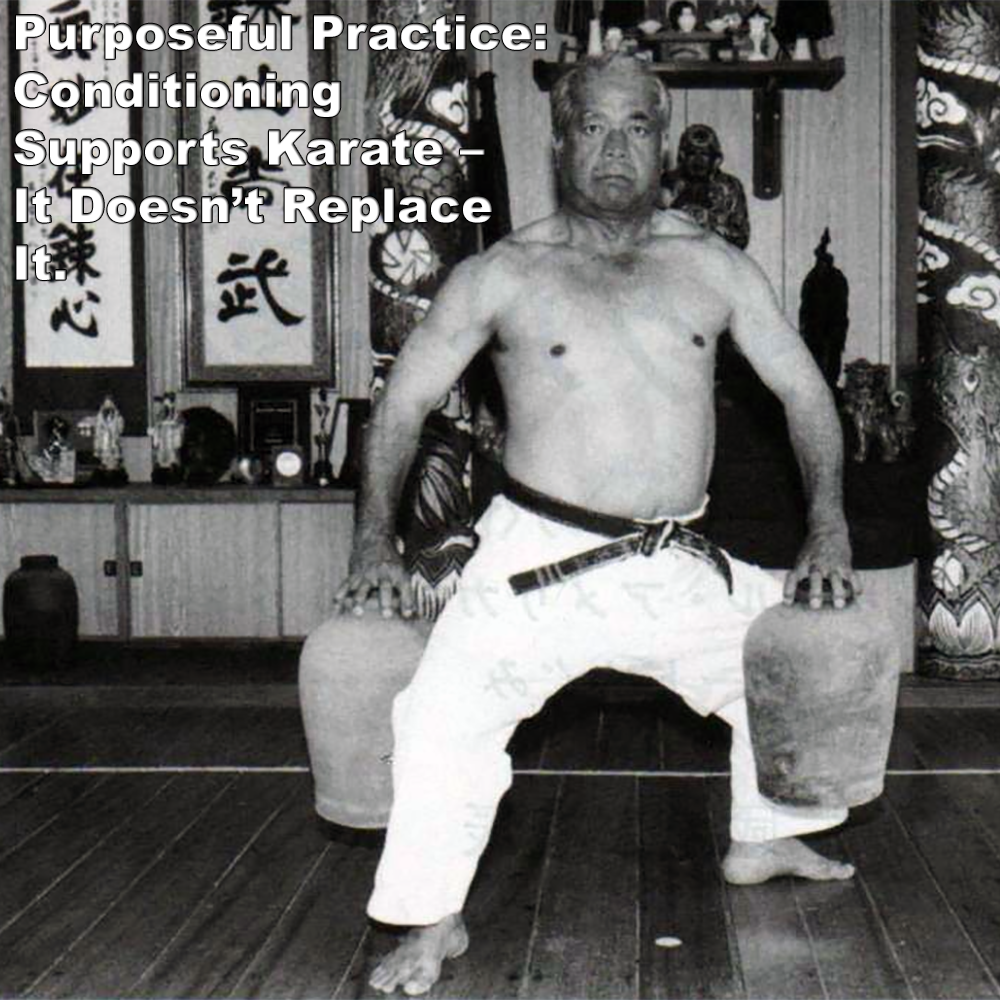
(Approx 1 minute 50 second read)
In a recent article, I wrote about the difference between ‘sweating in a karategi’ and ‘learning karate’. The response was interesting, and it’s clear that many instructors don’t understand the distinction.
.
There has always been a place for conditioning in the martial arts. Okinawan karate, for example, has long included hojo-undo: chi-ishi, nigiri-game, kongoken, ishi-sashi, makiwara, and more. Each tool was carefully designed to support the techniques practiced in kata and kumite.
.
These aren’t random fitness drills. They build bodies that can strike hard, resist force, grip effectively, and withstand impact. Every movement has a purpose.
.
Some people argued that fitness is essential and that classes need a focus on conditioning. One comment said, “Problem is, most people these days really need that fitness training.”
.
Another wrote, “Being physically fit and active makes karate easier for the individual. Today too many clubs ignore the fitness aspect and body conditioning of their students.”
.
And another explained, “I always insist on a good stamina/fitness workout in class; otherwise, unfit karateka techniques can be too weak and meaningless. Anyone in a fight situation that doesn’t possess reasonable fitness is going to be in trouble.”
.
These points all have merit, but they also risk missing something vital. I don’t disagree with those comments — fitness matters. However, there’s a critical distinction: conditioning should always support karate, not replace it.
.
General fitness exercise is not karate.
.
There has to be what I call purposeful practice. Any exercise should build strength, precision, and structural awareness, directly tied to the techniques of karate that students are learning.
.
One instructor even commented that for beginners, he starts with mostly health exercises and stances before introducing real combat techniques later.
.
Why? This highlights that conditioning alone does not teach the art. Doesn’t a beginner need something of value to take away from a lesson? Something about karate, about self-defense — probably what they signed up for.
.
The key takeaway for students is this: ask yourself, “Does this exercise improve my karate, or am I just getting sweaty?” And for instructors, every drill, every movement, and every minute in the dojo should directly contribute to learning the art, not simply burning calories.
.
Supplementary exercise only becomes meaningful when it is integrated with technique and understanding.
.
Time is limited. Every minute in the dojo should either develop your skill, your understanding, or your body in a way that directly supports karate. That’s the difference between being busy and actually progressing.
.
Let’s get back to training with purpose – and training karate.
.
.
Written by Adam Carter – Shuri Dojo
.
.
Photo Credit: Masanobu Shinjo – Goju-Ryu, training with the ‘nigiri-game’.
